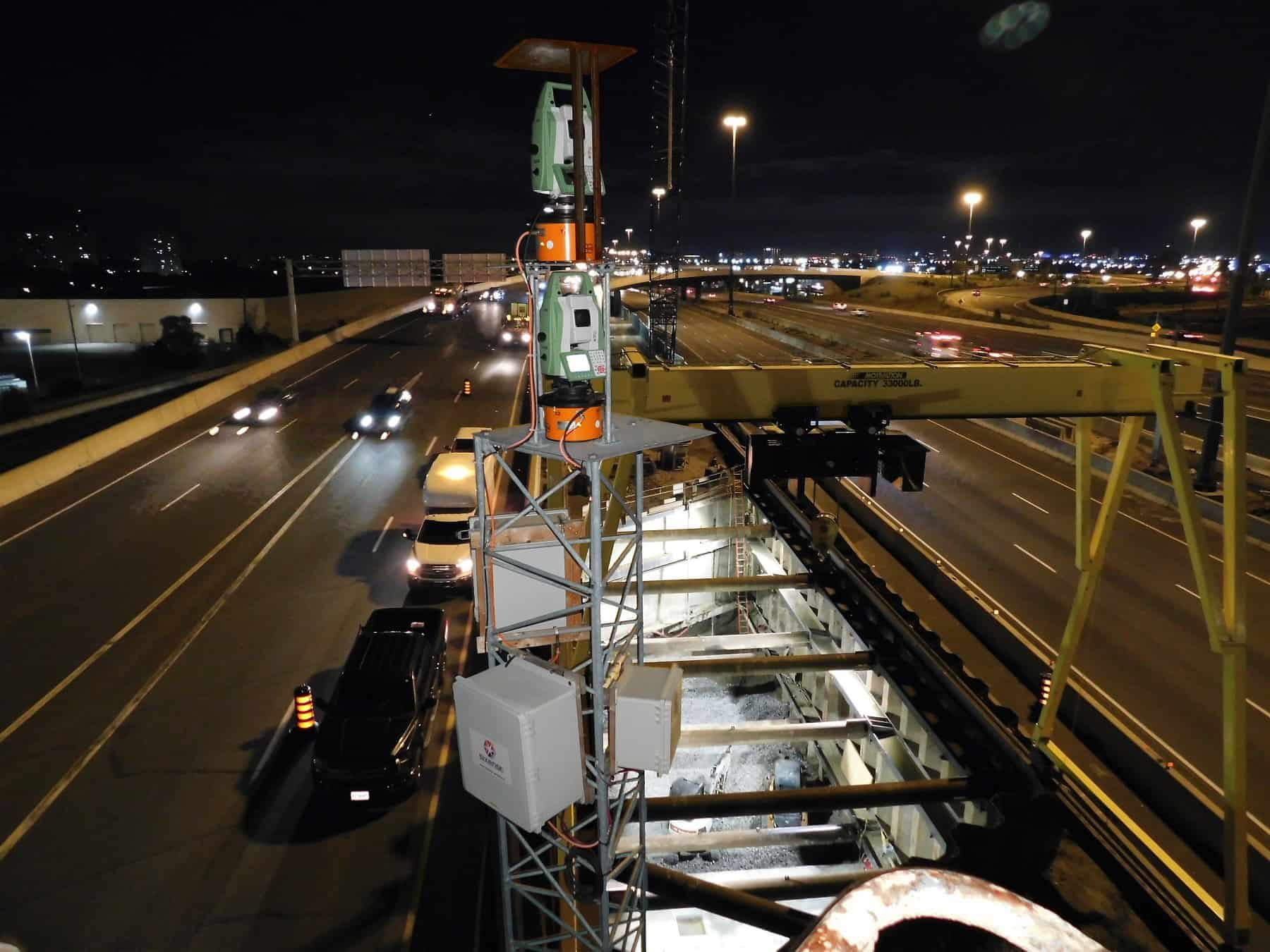Highway 401 & 409 | Canada
Images of the project
Highway 401 & 409
Sixense was retained by the Toronto Tunnel Partners (TTP) to perform environmental, geotechnical, and structural monitoring on Highway 401 & 409, North America’s busiest highway corridor, with 21 live lanes throughout the construction of two new twin tunnels underneath the highways. The new tunnels would be approximately 180m long and constructed via Sequential Excavation Method (SEM) with minimal overburden (1.5m).
Sixense’s Monitoring Work
One of the challenges of this project was Sixense had to conduct their work without disrupting the continuous traffic flow on the highways above. To ensure the safety of the traveling public on the highway and rail corridors, Sixense was hired to design a monitoring system based on non-contact technologies (conventional and reflectorless robotic total stations, distance-meters), horizontal shape arrays (4D-Shape), as well as other structural and environmental instruments to monitor the deformation of the surface and the subgrade of the roadway, the rail tracks, and the subgrade of the rail corridor.
Due to Sixense’s specialized devices, the system was able to achieve the high spatial density and high-frequency monitoring that was required on Highway 401 & 409 while in real-time minimizing interruptions of existing highway traffic and manual readings in heavy traffic areas. All the monitoring data was collected into one Integrated Database Management System (IDMS), Geoscope, which provided interactive graphs for the instruments and managed automated alarms and reports.
Highway 401 & 409 Instrumentation
- 8 AMTS (Cyclops) on the highway corridor were installed to monitor the 447 surface settlement points with reflectorless technology within the predefined grid of 2.75 spacing
- Highway 409’s ramp was monitored with prisms along with geotechnical instruments to get absolute displacement
- 11 horizontal Shape Accel Arrays (SAA) were installed between the highway surface and the newly constructed twin tunnels to monitor the subsurface deformation, supplemented with vertical In-Place Inclinometers (IPI) between the new and existing tunnels, WV Piezometers, Single Point Borehole eXtensometers (SPBX), and Tiltmeters
- Noise and vibration units were used to monitor the environmental impact
- The existing rail corridor had three AMTS, and each rail was equipped with rail clip prisms that allowed millimetric precision measurements
- On the wall of the existing tunnel, there were two rows of prisms, completing the displacement monitoring layout
- The horizontal clearance between the interior of the north wall of the existing tunnel, and the nearest point on the operating north track was equipped with nine laser distance sensors at three different levels and readings were taken with 20Hz frequency, enabling immediate notifications
A Historical Project
After six months of baseline, construction was successfully completed after 2.5 years of structural improvement and excavation. Sixense closed out with twelve months of monitoring to identify potential residual settlements. The new tunnels transformed the transportation network in the Greater Toronto Area by providing a rail system that delivers two-way, all-day service every 15 minutes. The project was also recognized as the 2022 Project of the Year Over $100 Million by the Tunneling Association of Canada.
Sixense Northern America was honored to have a role in this historic project that helped reduce traffic congestion, greenhouse gases, and fuel consumption. It also improved the quality of life for commuters by reducing their daily travel time.
